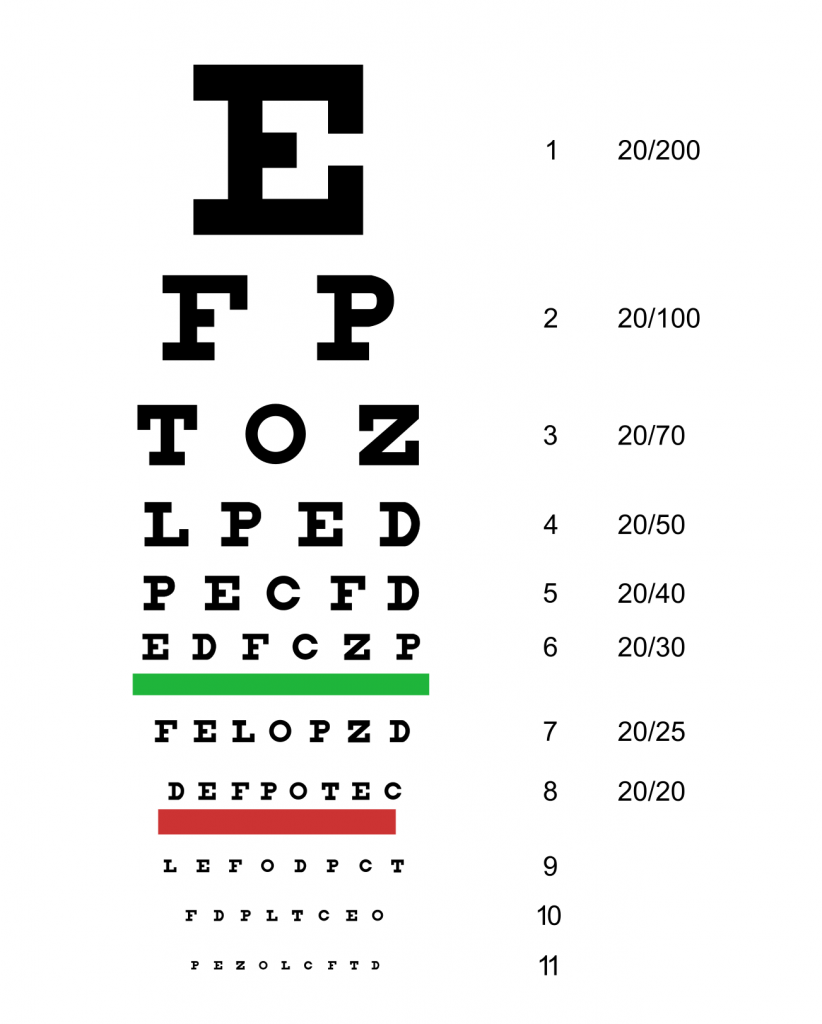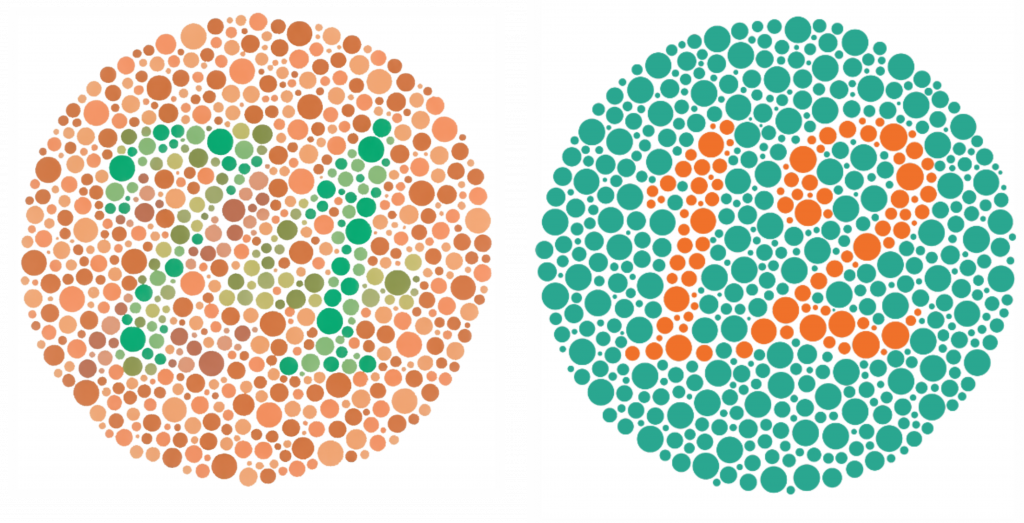15.6 Medical Specialties, Diagnostic Testing, and Procedures Related to the Sensory System
Medical Specialists
Several medical specialists help diagnose and treat conditions related to the eye. An ophthalmologist (ŏp-thăl-MŎL-ō-jĭst) is a physician who specializes in treating eye diseases and performs eye surgery. An optometrist (ŏp-TŎM-ĕ-trĭst) is a doctor who has received a Doctor of Optometry (op-TOM-ĕ-trē) degree. Optometrists perform eye exams and vision tests and prescribe corrective lenses. Opticians (ŏp-TĬSH-ănz) are technicians trained to design, verify, and fit eyeglass lenses and frames, contact lenses, and other devices to correct eyesight. They use prescriptions supplied by ophthalmologists or optometrists, but do not test vision or write prescriptions for visual correction.[1]
Read additional information on the American Association for Pediatric Ophthalmology and Strabismus: Difference Between An Ophthalmologist, Optometrist, and Optician web page.
Audiology (od-ē-OL-ŏ-jē) is the study of hearing. Audiologists (od-ē-OL-ŏ-jĭstz) are specialists who study and treat hearing. They perform diagnostic testing like audiometry and provide hearing loss interventions, such as hearing aids. Otology (ō-TŎL-ō-jē) refers to the study of the ear. An otolaryngologist (ō-tō-RĪ-nō-lăr-ĭn-GŎL-ō-jĭst) is a physician who specializes in ear, nose, and throat (ENT) treatments and conditions.[2]
Read additional information about audiologists on the American Academy of Audiology’s What is An Audiologist? web page.
Ophthalmic Medical Assistant
Ophthalmic medical assistants work in ophthalmology and optometry practices and in retail optical settings. Ophthalmic assistants perform prescreening and specialty testing, assist with dispensing glasses and contact lenses, and perform office management duties, including maintaining patient information and billing and insurance processes.
Optometric Technician
Optometric technicians work under the supervision of an optometrist or ophthalmologist. Optometric technicians assist an optometrist during eye exams and other optometric procedures.
Diagnostic Testing
Eye Exams
Common tools used to screen individuals for vision problems are the Snellen chart, a near vision chart, and Ishihara plates. If a vision problem is identified, the patient is referred to an optometrist for further vision testing. An ophthalmoscope (op-THAL-mŏ-skōp) is an instrument used to view the eye, and ophthalmoscopy (op-thal-MOS-kŏ-pē) is the process of viewing the eye.
Snellen Chart
Distant vision is tested by using the Snellen chart. See Figure 15.19[3] for an image of the Snellen chart. The patient is placed 20 feet away from the chart and asked to cover one eye and read the letters from the lowest line they can see clearly. This is repeated with the other eye. A person with normal visual acuity (VIZH-u-ăl ă-KŪ-ĭt-ē) or sharpness or clearness of vision is documented as having 20/20 vision. A person with impaired vision has a different lower denominator of this fraction. For example, a vision measurement of 20/30 indicates that the patient has decreased distant vision and can see letters clearly at 20 feet that a person with normal vision can see clearly at 30 feet.[4]

Near Vision Chart
Near vision is assessed by having a patient read from a prepared card that is held 14 inches away from the eyes. See Figure 15.20[5] for an image of a prepared card used to assess near vision.
![]“111012-F-ZT401-067.JPG” by Airman 1st Class Brooke P. Beers for U.S. Air Force is in the Public Domain. Access for free at https://www.pacaf.af.mil/News/Article-Display/Article/593609/keeping-sight-all-right/ Image showing a near vision card](https://wtcs.pressbooks.pub/app/uploads/sites/46/2023/05/111012-F-ZT401-067-1.jpg)
Ishihara Plates
Ishihara plates are commonly used to assess color vision. Each of the colored dotted plates shows either a number or a path. See Figure 15.21[6] for an example of Ishihara plates. A person with color blindness is not able to distinguish the numbers or paths from the other colored dots on the plate.

Ear Exams
An otoscope (Ō-tō-skōp) is an instrument used to view the ear, and otoscopy (ō-TŎS-kō-pē) is the process of viewing the ear.
Audiometry
Audiometry (od-ē-OM-ĕ-trē) refers to diagnostic testing that measures hearing. This includes tests of mechanical sound transmission (middle ear function), neural sound transmission (cochlear function), and speech discrimination ability (central integration). A complete evaluation of a patient’s hearing is done by trained personnel using instruments designed specifically for this purpose. For example, an audiometer (od-ē-OM-ĕt-ĕr) is an electric instrument consisting of a tone generator, a bone conduction oscillator for measuring cochlear function, and earphones for air conduction testing. Sounds are played through headphones to one ear at a time, and the patient is asked to respond if they hear each sound. An audiogram (OD-ē-ō-gram) is a chart that shows the results of a hearing test. It shows how well sounds are heard in terms of frequency (high-pitched sounds versus low-pitched sounds) and intensity (loudness).[7]
- American Association for Pediatric Ophthalmology and Strabismus (2019, February 26). Difference between an ophthalmologist, optometrist, and optician. https://aapos.org/glossary/difference-between-an-ophthalmologist-optometrist-and-optician ↵
- Johns Hopkins Medicine. (n.d.). Hearing loss. https://www.hopkinsmedicine.org/health/conditions-and-diseases/hearing-loss ↵
- “Snellen chart.jpg” by Jeff Dahl is licensed under CC BY-SA 3.0 ↵
- Sue, S. (2007). Test distance vision by using a Snellen chart. Community Eye Health, 20(63), 52. https://www.ncbi.nlm.nih.gov/pmc/articles/PMC2040251/ ↵
- “111012-F-ZT401-067.JPG” by Airman 1st Class Brooke P. Beers for U.S. Air Force is in the Public Domain. Access for free at https://www.pacaf.af.mil/News/Article-Display/Article/593609/keeping-sight-all-right/ ↵
- This work is a derivative of “Ishihara 9.png” and "Ishihara_1.png" by Shinobu Ishihara and in the Public Domain. ↵
- Johns Hopkins Medicine. (n.d.). Hearing loss. https://www.hopkinsmedicine.org/health/conditions-and-diseases/hearing-loss ↵

